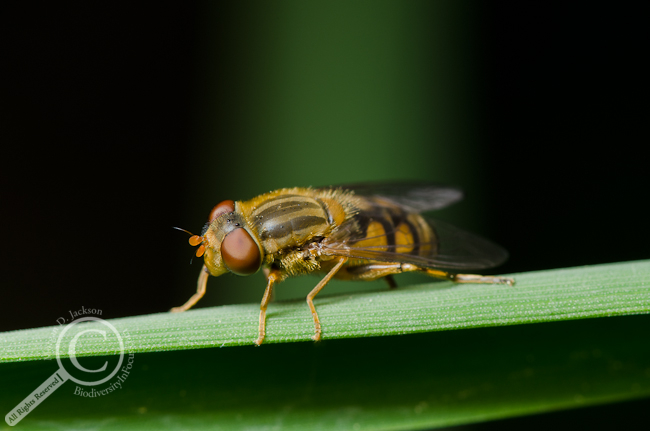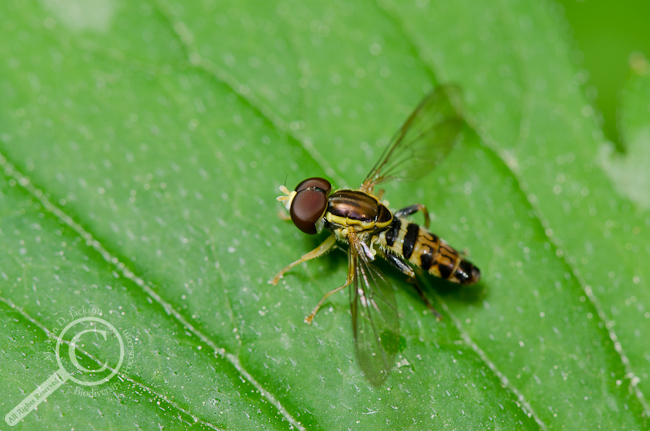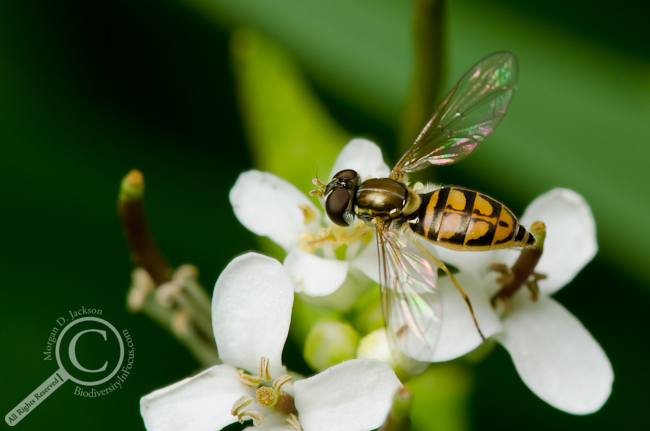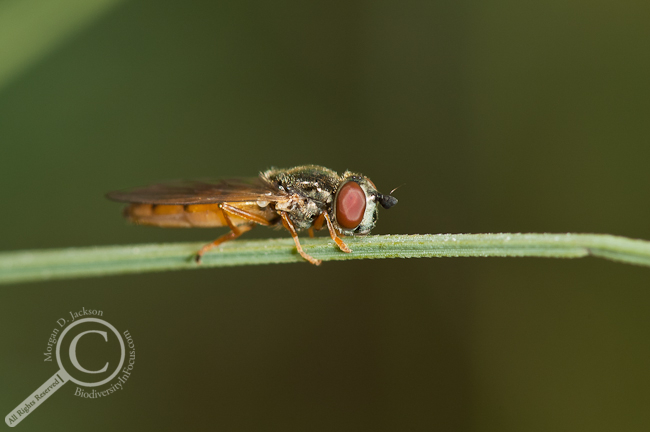 It’s National Pollinator Week in the US, and although Canada doesn’t have their own celebration of insect-facilitated sex, that doesn’t mean I can’t promote some sexy fly pollinators! Honey bees and their hymenopteran brethren get most of the credit for pollination, but flies are likely just as powerful pollinators, only underappreciated and understudied thus far. Some of the world’s most vital crops (i.e. chocolate) depend on flies for pollination (in this case a biting midge of the family Ceratopogonidae), while countless other plants find themselves in a veritable orgy of Diptera deliveries. Some of the more striking of these include the Syrphidae, conveniently known as flower flies for their propensity to visit flowers for pollen and nectar.
It’s National Pollinator Week in the US, and although Canada doesn’t have their own celebration of insect-facilitated sex, that doesn’t mean I can’t promote some sexy fly pollinators! Honey bees and their hymenopteran brethren get most of the credit for pollination, but flies are likely just as powerful pollinators, only underappreciated and understudied thus far. Some of the world’s most vital crops (i.e. chocolate) depend on flies for pollination (in this case a biting midge of the family Ceratopogonidae), while countless other plants find themselves in a veritable orgy of Diptera deliveries. Some of the more striking of these include the Syrphidae, conveniently known as flower flies for their propensity to visit flowers for pollen and nectar.
While these 3 species are pollinators of compound flowers (like the ones in the last photo being visited by Toxomerus marginatus), some flower flies are specialists on plants which were typically thought to be wind pollinated, such as grasses.
With around 900 species of Syrphidae in North America (and more than 6000 species around the world), not to mention the countless other fly families which visit flowers, there are plenty of flies available to act as plant escorts. You might say that fly pollinators do a little dance of love on behalf of the flowers. I can imagine these fast-flying flower phallus’ bumping and grinding to something a little like this…
The next time you stop to smell the flowers, don’t forget what it is you’re smelling, the sultry perfume of a flower looking for a little fly action!
This song is available on iTunes – Pollinator (Gary Beck Remix) – Global Underground – Tom Novy
If you’d like some more insect sexiness, check out Bug Girl’s excellent, innuendo filled explanation of pollination!





Yay for flies! I try to make a point in the pollination biology lecture of my beekeeping class that flies are the bees’ equals in this regard.
The other intersting thing to note about fly pollinators is that they likely do a better job of mixing the gene pool than do bees, as they tend to visit fewer flowers on an individual plant before moving on to the next plant. They also appear to fly longer distances between plants than bees. All of this increase the amount of inter-plant pollen transfer as compared to bees who typically work one plant until all the pollen is gone before moving on.
Great story and pics again Morgan!
Beautiful photographs and information, as always. I especially like how you placed the leaf in the background, it adds a lot to the picture. Three cheers for flies